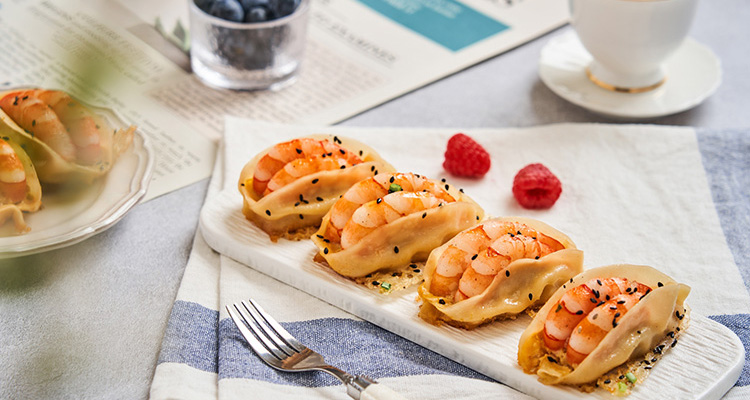Beijing Pan-Fried Dumplings: Crispy Golden Bites of Northern Chinese Street Flavor
Imagine a sizzling iron pan in a Beijing alleyway, filling the air with the irresistible aroma of toasting dough. This is the magic of pan-fried dumplings, a beloved Northern Chinese snack that perfectly combines the beauty of dumplings with the art of frying. With their golden crispy bottoms and juicy, tender fillings, these dumplings deliver an unforgettable contrast of textures. Whether enjoyed as a quick breakfast or a late-night comfort food, they embody the warmth and heartiness of Northern Chinese cuisine. This guide will take you from the history and cultural roots to how to savor them like a local — so your Beijing trip won’t be complete without that one perfect bite.
1. Origins and History of Pan-Fried Dumplings
The story of pan-fried dumplings (guotie) is deeply tied to China’s long-standing noodle and dumpling culture. Though their exact origin is hard to trace, it’s widely believed they date back to the Song Dynasty. According to a popular tale, an imperial chef accidentally dropped uncooked dumplings into an oil pan — and in an effort to save them, he pan-fried them instead. The result was unexpectedly delicious, crispy outside and tender inside, winning the emperor’s favor. Over centuries, the dish spread throughout Northern China, especially in Beijing, Shandong, and Henan, becoming one of the most iconic street snacks that showcase Northern ingenuity and mastery of dough-based dishes.
2. Cultural Meaning
In Northern China, pan-fried dumplings go far beyond being just food — they represent warmth, family, and the rhythm of city life. The crackling sound and savory aroma from street stalls in Beijing’s hutongs or Shandong’s bustling night markets are part of everyday culture. Making dumplings together at home is also a cherished family activity, symbolizing unity and affection. For travelers, tasting a freshly pan-fried dumpling is not only a culinary experience but also a way to connect with authentic Beijing or Shandong food culture.

3. Core Ingredients and Flavor Profile
The charm of pan-fried dumplings lies in their simple yet flavorful ingredients. The dough is made from plain flour and water, kneaded until smooth, while the filling varies by region. In Beijing, pork and Chinese cabbage are common, seasoned with ginger, scallion, soy sauce, and sesame oil. Some versions include seafood or lamb for a richer taste. When fried, the thin wrapper turns crisp and golden, while the inside stays juicy and aromatic, achieving that signature contrast of texture — crispy bottom, soft top, and tender filling.
4. Cooking Technique: Crispy Perfection
Mastering the “guotie” technique requires both timing and skill. Dumplings are first arranged in a hot, lightly oiled pan, then seared until the bottoms start to turn golden. Water or a flour-water mixture is poured in, and the pan is immediately covered to steam the dumplings. As the water evaporates, the dumplings crisp again, creating the signature lace-like crust on the bottom. This perfect combination of frying and steaming gives pan-fried dumplings their irresistible look and bite.
5. Best Ways to Enjoy
Locals often dip their dumplings in a simple mix of Chinkiang vinegar and sliced ginger, sometimes with a touch of chili oil for heat. The tangy vinegar cuts through the richness of the filling, balancing the flavors beautifully. Pan-fried dumplings are best eaten hot, straight from the pan, when the crispy base is at its peak. Pair them with soy milk for breakfast, or beer for a hearty evening snack — both are classic combinations in Beijing.

6. Famous Places to Try in Beijing
If you want to taste authentic Beijing pan-fried dumplings, visit time-honored restaurants such as Goubuli Dumpling Shop, Xian Lao Man, or Mr. Shi’s Dumplings. These places preserve the traditional recipes while adding a touch of modern creativity. Street vendors in hutongs, especially around Nanluoguxiang and Guijie Street, also offer flavorful versions that capture the essence of local life. Each vendor’s dumplings vary slightly — some crispier, some juicier — making it fun to compare and find your favorite.
7. Regional Variations
Though Beijing is famous for its pan-fried dumplings, other regions also have their own takes. In Shandong, dumplings are slightly larger with a thinner crust and more robust seasoning. In Northeast China, fillings may include sauerkraut or beef, reflecting colder climates and hearty tastes. These variations showcase how diverse and adaptable the humble dumpling can be across China’s food landscape.
8. Make It at Home
Making pan-fried dumplings at home is easier than it looks.
Ingredients: 200g minced pork, 100g chopped cabbage, 2 tbsp soy sauce, 1 tsp sesame oil, 1 tsp minced ginger, dumpling wrappers, cooking oil, and water.
Steps:
- Mix pork, cabbage, and seasonings for the filling.
- Wrap the dumplings and seal tightly.
- Heat oil in a nonstick pan, place dumplings bottom-side down, and fry until golden.
- Add water (about one-third of the dumpling height), cover, and steam for 4–5 minutes.
- Uncover and cook until water evaporates and bottoms turn crispy again. Serve immediately with vinegar and ginger dip.
9. Conclusion: A Must-Try Taste of Beijing
Pan-fried dumplings are more than a snack — they are a vivid expression of Northern Chinese culinary craftsmanship. Every bite tells a story of home, history, and the joy of sharing food. When you visit Beijing, don’t miss the chance to enjoy these golden, crispy delights straight from the pan. Whether in a cozy hutong eatery or a bustling restaurant, the taste of guotie will give you a warm, flavorful memory of China’s capital.


